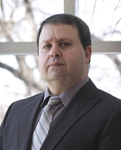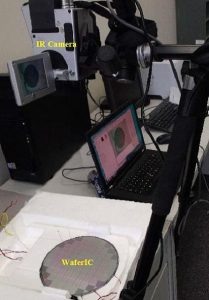EDITORIAL
5th edition of the ReSMiQ Innovation Day – RID2016
On October 13th the participants in the 5th edition of the ReSMiQ Innovation Day gathered at Polytechnique Montréal to attend the keynote speeches, the panel discussion and several technical demonstrations. This annual event organized by our center aims to give visibility to the research work done by graduate and undergraduate students of the province of Quebec in the field of microsystems. For this edition, ReSMiQ joined forces for the second time with the IEEE Circuits and Systems Society through its Outreach Initiative Event program sponsoring the RID2016 to organize an imposing event during which internationally renowned experts presented their most recent developments in the field of circuits and systems. We wish to thank Professors Luc Frechette, from Université de Sherbrooke, Tsung-Yi Ho from the Tsing Hua University in Taiwan, and Jahangir Hossain from the University of British Columbia. Thanks to all for the participation.
Students at all levels presented their scientific and technical expertise during a competition through experimental demonstrations to a jury constituted of many experts. The three best projects in each category were awarded prizes as well as three special awards from the IEEE CAS society, IEEE Montréal, and the IEEE Montréal SSCS Chapter. This year, 14 projects were presented. We wish to thank all the students who submitted their project as well as congratulate all the winners. We hope to see more new innovations for the next edition to be held on October 12, 2017.
We invite you to watch the presentations of the projects by going to the website of the RID 2016 on the «Competition» page and also the photo gallery.
Undergraduate level winners
1st place – Capteur électrochimique à multicanaux pour le contrôle de la qualité de l’eau
by Jessy Mathault (B.Sc.), U. Laval
2nd place – Implant flexible pour ECG et stimulation optique sans fil
by Léonard L. Gagnon (B.Sc.), U. Laval
3rd place – Système d’alimentation pour drone avec surveillance de batterie Li-Po
by Charles Alexis Carrier (B.Sc.), Serge Lipovan (B.Sc.), Sébastien Pelchat (B.Sc.), U. de Sherbrooke
Gagnants du concours cycles supérieurs
1st place – Interface neuronale CMOS haute résolution pour l’électrophysiologie et l’optogénétique synchronisée
by Gabriel Gagnon-Turcotte (Ph.D.), U. Laval
2nd place – Conception d’un système d’acquisition pour l tomographie optique diffuse à mesure dans le domaine temporel
by Jonathan Bouchard (M.Sc.), U. de Sherbrooke
3rd place – Modélisation et implémentation d’oscillateur MEMS à hautes performances
by Anoir Bouchami (M.Sc.), UQAM
Special awards
IEEE CASS Award
Interface neuronale CMOS haute résolution pour l’électrophysiologie et l’optogénétique synchronisée
by Gabriel Gagnon-Turcotte (Ph.D.), U. Laval
IEEE Montréal Award
Implant flexible pour ECG et stimulation optique sans fil
by Léonard L. Gagnon (B.Sc.), U. Laval
IEEE Montréal SSCS Chapter Award
Wireless power and data transmissions in harsh environment applications
by Ahmad Hassan (Ph.D.), Polytechnique Montréal
NEWS FROM OUR MEMBERS
Exposure
– Dr. Gagnon G., from ETS, sees some of his latest work being the subject of an article by Québec Science for his contribution in the field of media arts.
More details / Video
Achievement
– Dr. Gosselin from Université Laval is supervising Gabriel Gagnon-Turcotte for a master’s degree who received the Canada’s governor general gold academic medal. More details
– Dr. Beltrame from Polytechnique Montréal received a grant from the Consortium for Aerospace Research and Innovation in Canada (CARIC) for the project “IoT Platform for disaster Response” in collaboration with Humanitas Solution, Dassault Systèmes, Bell Helicopter and Elisen & Associés.
– Dr. Gosselin from Université Laval received an Idea to Innovation grant from NSERC that will support the development of innovating wireless technologies dedicated to brain research.
– Dr. Beltrame from Polytechnique Montréal received a Research Tools and Instruments Grants from NSERC for the project “Swarm Robotics Laboratory”.
– Dr. Gagnon G., from ETS, received a Collaborative Research and Development Grant in partnership with Axsera and Media 5 for the project “Low Latency and Highly Secure Protocols for Critical Communications”.
– Dr. Liboiron-Ladouceur from McGill and Dr. Cowan from Concordia University were awarded a 3-year grant from NSERC’s Strategic Partnership program for the project “Software-enabled energy-efficient hardware infrastructure for next-generation data centres” with a contribution from Reflex Photonics, Huawei Technologies Canada, and Intengent.
RESMIQ’S ACTIVITIES
Scholarships and financial support for graduate students
ReSMiQ SCholarship, supplementary scholarship and financial support
APPLICATION DEADLINE: January 16 2017
More details
ReSMiQ scholarship for postdoctoral fellow
APPLICATION DEADLINE: January 16, 2017
More details
Financial support for undergraduate students
APPLICATION DEADLINE: March 15, 2017
More details
SIGNAL is the main monthly information medium of the Microsystems Strategic Alliance of Québec (ReSMiQ). This newsletter aims to be an active link between the members of ReSMiQ and all individuals who have an interest in research and innovation in microsystems. We commit ourselves to promote in it our members’ research and increase ReSMiQ’s visibility.
ReSMiQ is a group of researchers in an interuniversity research center that can count on the support of the Fonds de recherche du Québec – Nature et technologies (FRQNT) and nine (9) Quebec universities involved in microsystems research.





